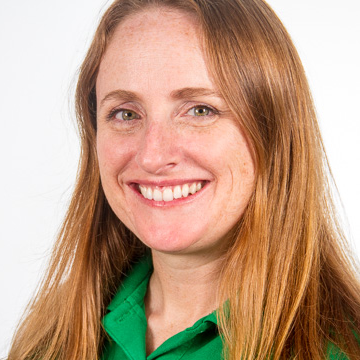Each week, we post a conversation starter in the Desmos Fellows Slack to help us connect, inspire, and grow. Recently we asked, “What is one piece of advice you wish you could go back and give yourself before you started distance teaching?”
The responses were both thoughtful and rich, and we wanted to share some of those thoughts with a larger community of teachers. Maybe readers will find new perspectives here, new ideas, a shared experience, or maybe some combination of these. It is important to remember that these responses are advice these Fellows would give to themselves, are reflective of their learning in their particular circumstances, and that this advice might in fact change in another month’s time. Nonetheless, some themes emerged in the discussion, such as flexibility and attending to classroom culture in this new environment.
Slow Down
Many of the Desmos Fellows reflected that they started off at a pace that was simply not sustainable. Several weeks in, it is easier to understand that we need to treat this period of time more like a marathon than a sprint. It’s important to set expectations both for yourself and for your students. Don’t feel bad about putting a stopping point on your day. Let your students know you won’t be answering emails past dinnertime. Make time for yourself. Find ways to cultivate joy during these challenging times. Desmos Fellow Joe Dziuba shared:
I hit the ground sprinting in the beginning of our Distance Learning venture, creating a slew of content, sitting in front of a laptop for eternity troubleshooting tech support for colleagues/students while trying to create virtual structures to maintain a sense of normalcy and community within our building. Upon our return from spring break, I’ve made a sincere effort to scale back and structure my time accordingly so I can maximize what I am able to provide to anybody seeking assistance.”
Be Flexible
Things won’t go as planned. Some assignments will work well and others won’t. Students will struggle with technology, and they will be overwhelmed by it. Make sure you don’t assign too many things to your students. Try different things with your students, and be flexible when things don’t go as planned. A mix of activities with feedback and more open-ended approaches can work well. Don’t forget to find ways to connect and check in with your students. Consider adding in activities that aren’t strictly content related, such as the #mathartchallenge that Desmos Fellow Annie Perkins started.
Most of all, give yourself some grace. Emma Vierheller shared:
I’ve become more vulnerable with students to admit something isn’t working. The first week or two, I wanted to seem like I was a rock in the storm and appear totally on top of things and stable. Now I’m asking for their input way more on class activities, on what’s working, and am much more okay with admitting mid week we should just skip an assignment that isn’t doing it for students. It’s let me take off my mask and breathe and (hopefully) model for students it’s okay to not know how to do this.
Classroom Culture
Distance teaching poses enormous challenges when it comes to classroom culture. The Desmos Fellows have been reflecting on challenges such as equitable participation and helping students feel safe about taking risks academically.
Allison Krasnow wrote:
Equitable participation in distant learning is REALLY hard. In a physical classroom, I have so many more ways to get students to participate beyond hand-raising, but in Zoom, I feel so limited. My advice to myself is to have certain times in the week when I meet with heterogeneous groups of students and other times when I meet with smaller groups of students with similar needs. I have flexible grouping in my physical classroom, but hadn’t thought to do it in distance learning. I am trying this out for the first time next week, sending out different sets of invitations for synchronous learning through Google Classroom.
Paul Jorgens said:
We are asynchronous and it has been hard to figure out how to best utilize Zoom. It seems that time has been the least valuable. We (I do Zoom sessions with a colleague) started by offering help sessions similar to our after support program. It works in person after school. It doesn’t work in Zoom. I don’t think students feel the same safety they feel in the classroom to risk asking questions or risk being wrong. I don’t think it has been helpful to the kids that I want to help the most. I am not sure how to build that safety but I think it will require several sessions and a cross curricular effort.
Today we played. We did a Polygraph together and then split into rooms and shared strategies. It felt better when we said good bye at the end.”
As you read these responses, what resonates with you? What advice would you give the you of six weeks ago if you could? We’d love to hear from you, perhaps on Twitter or in our Facebook group.
